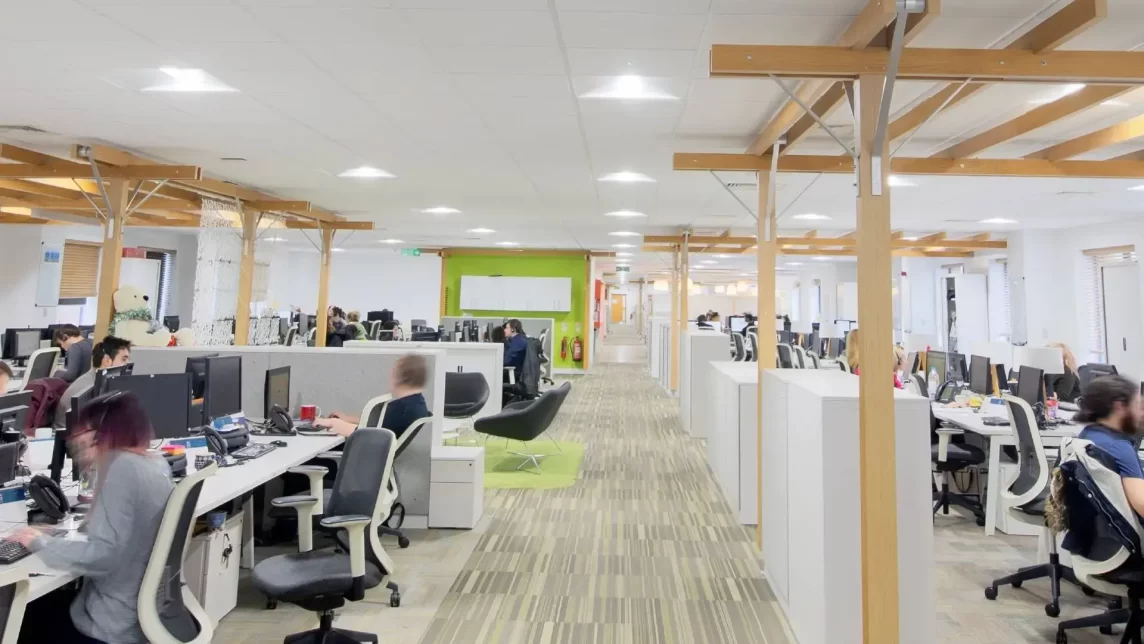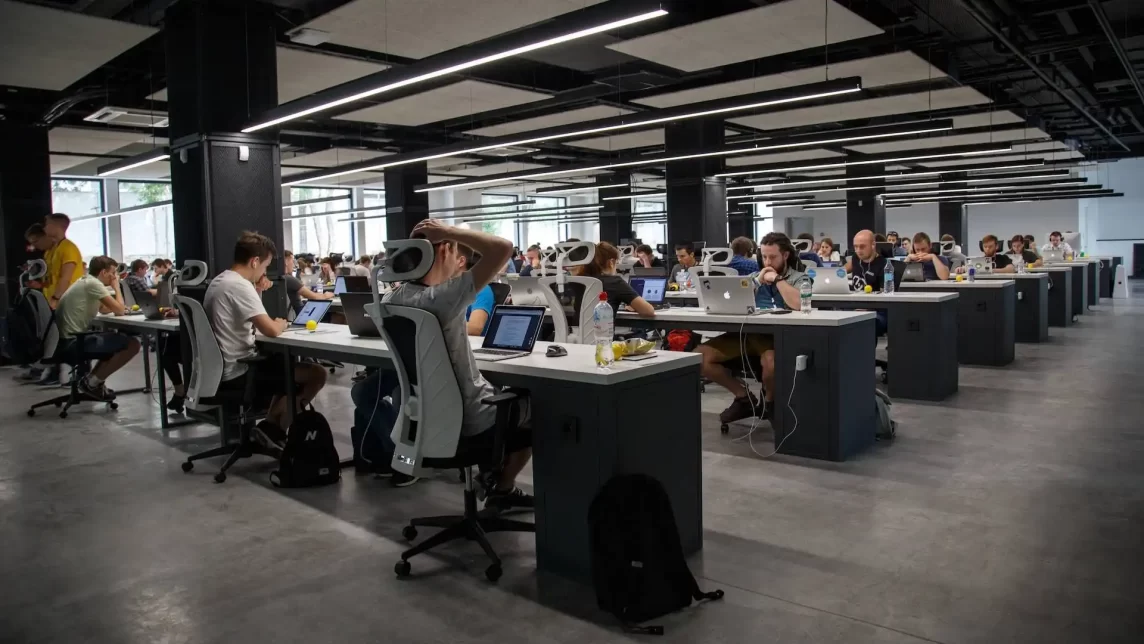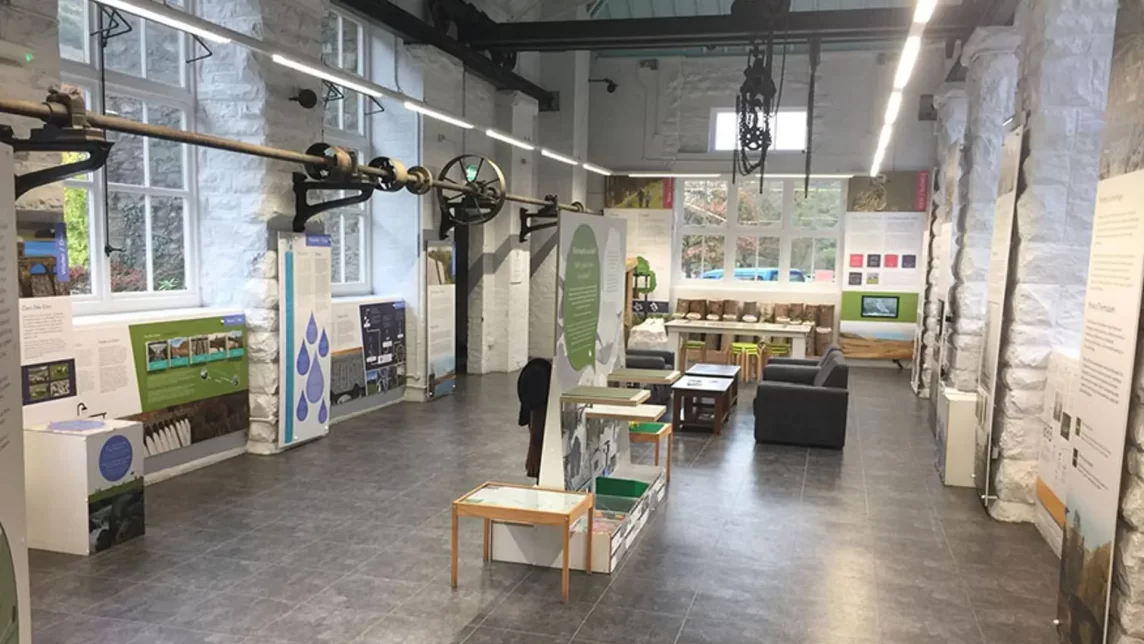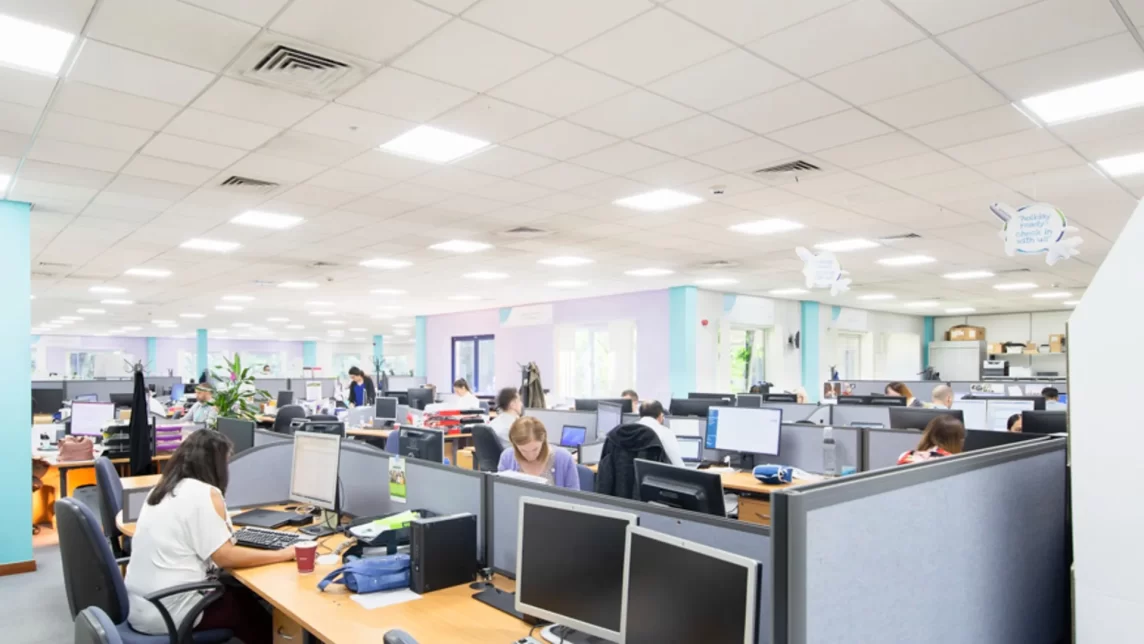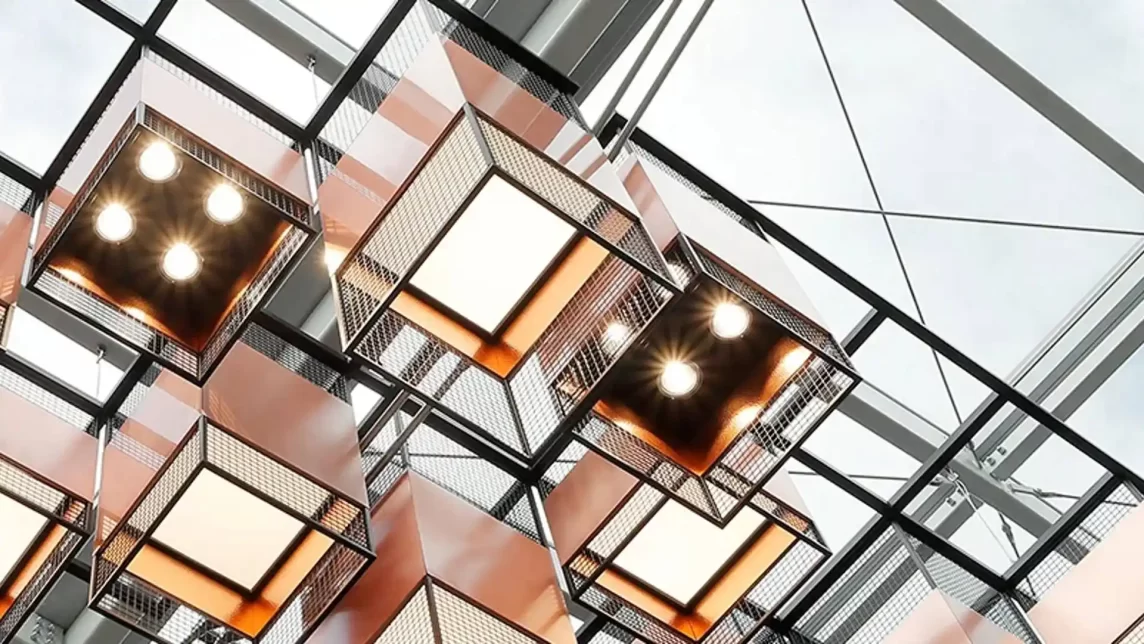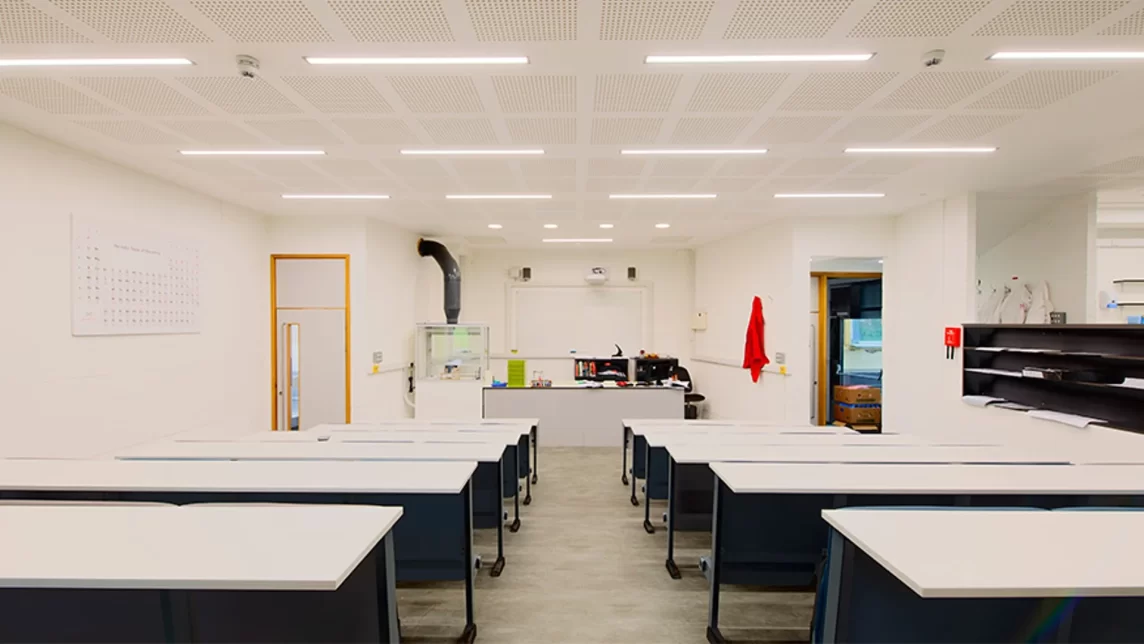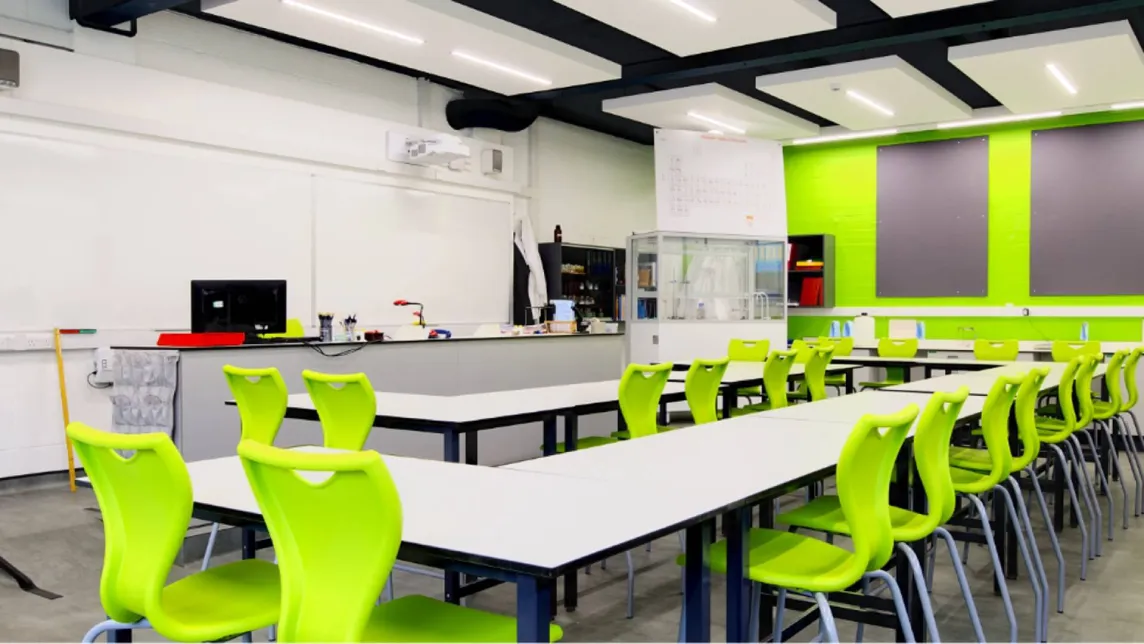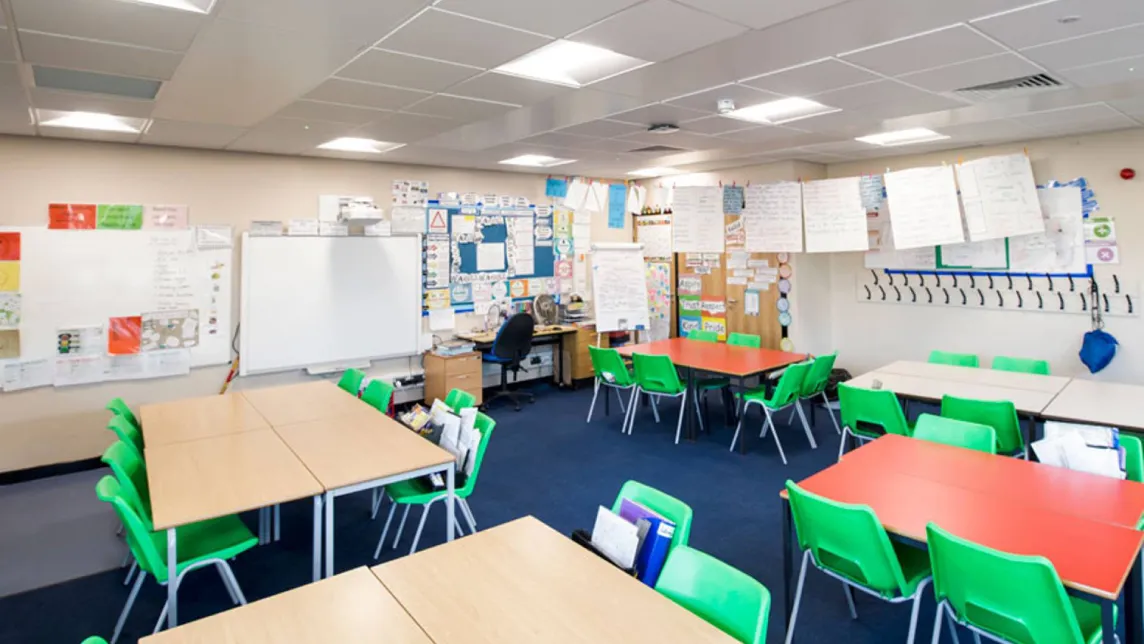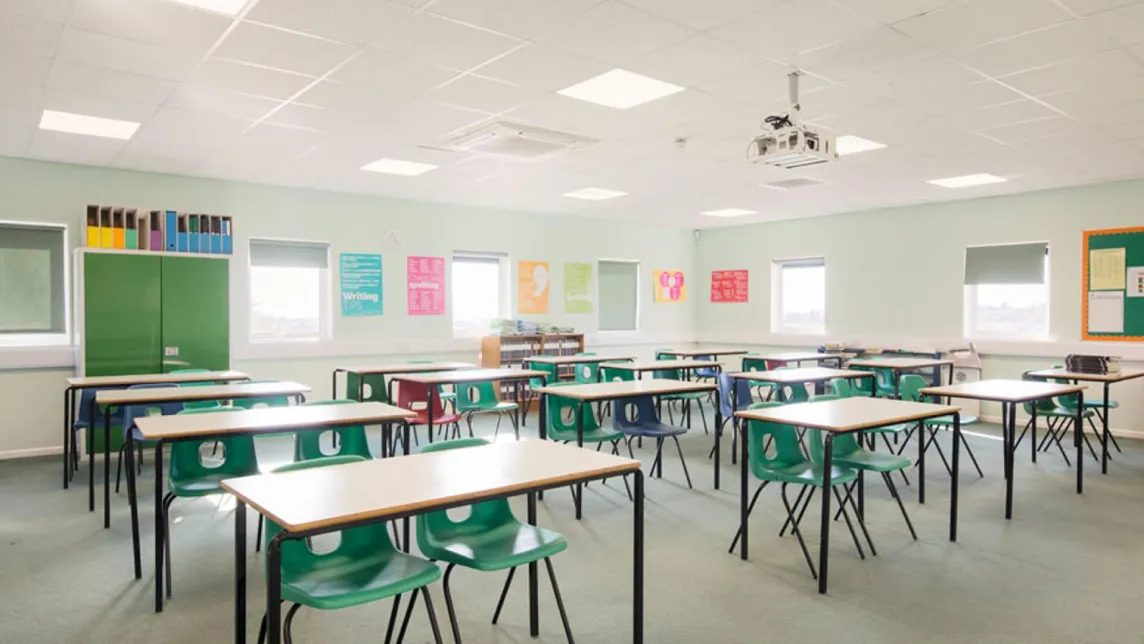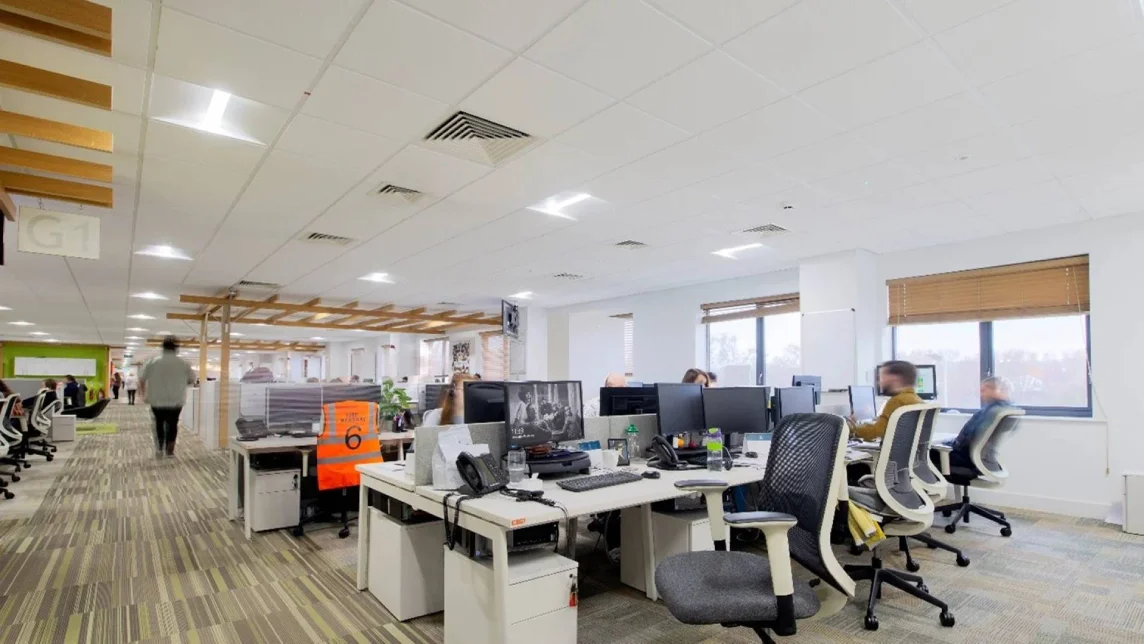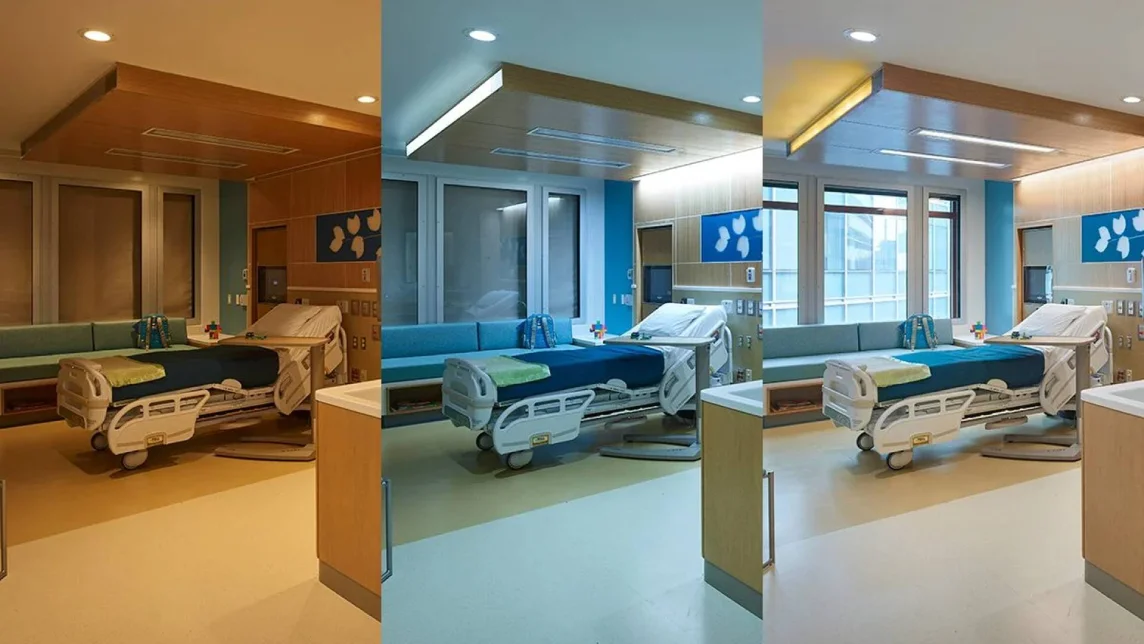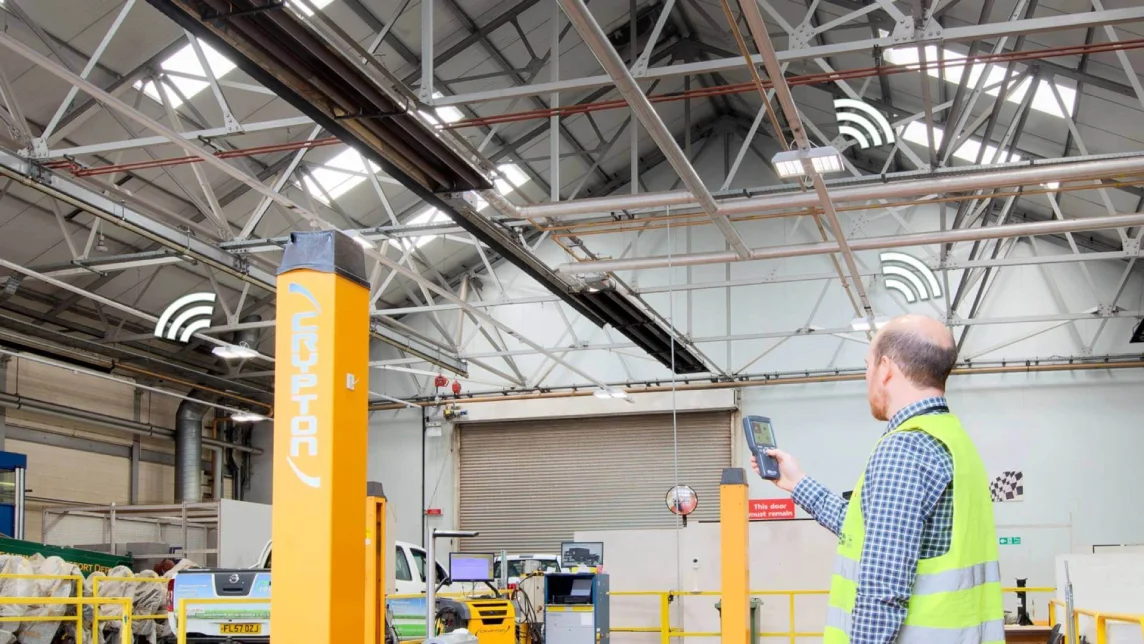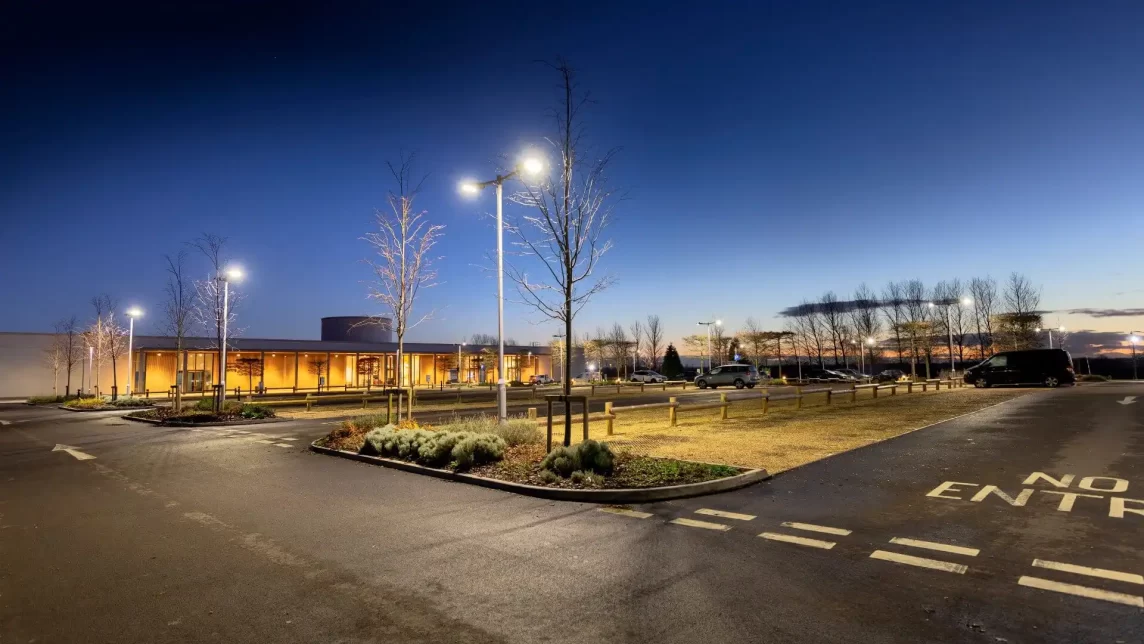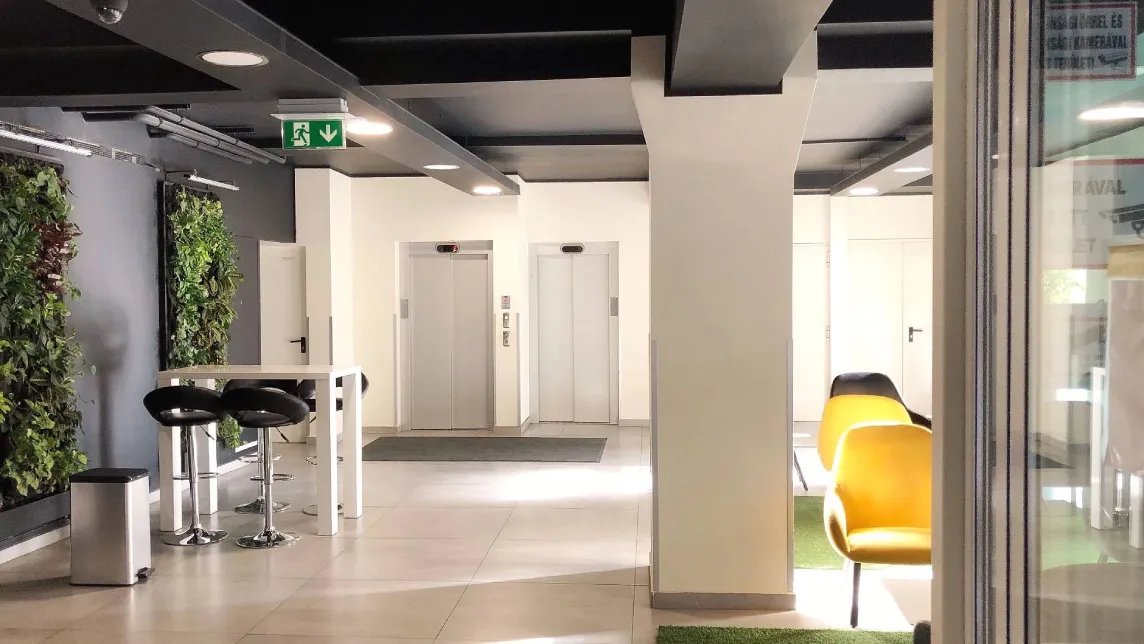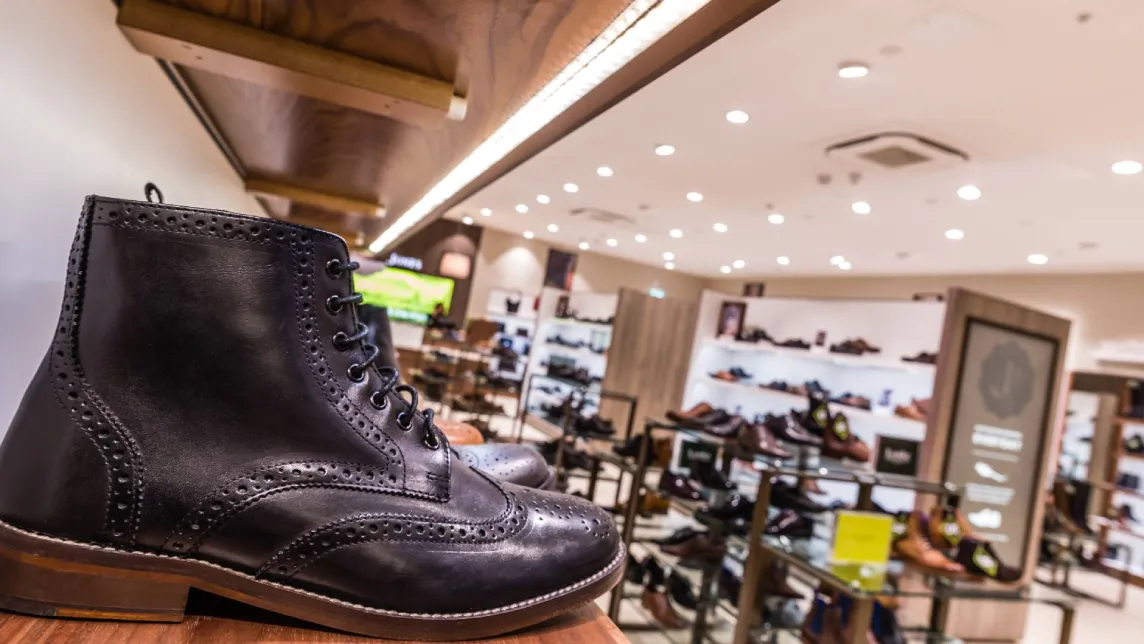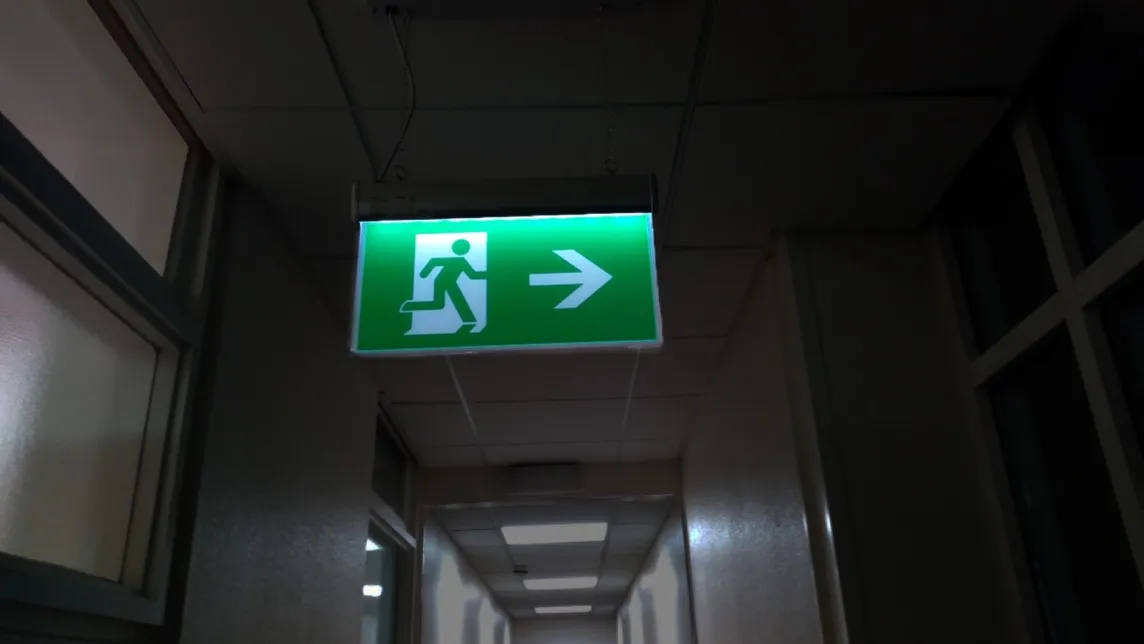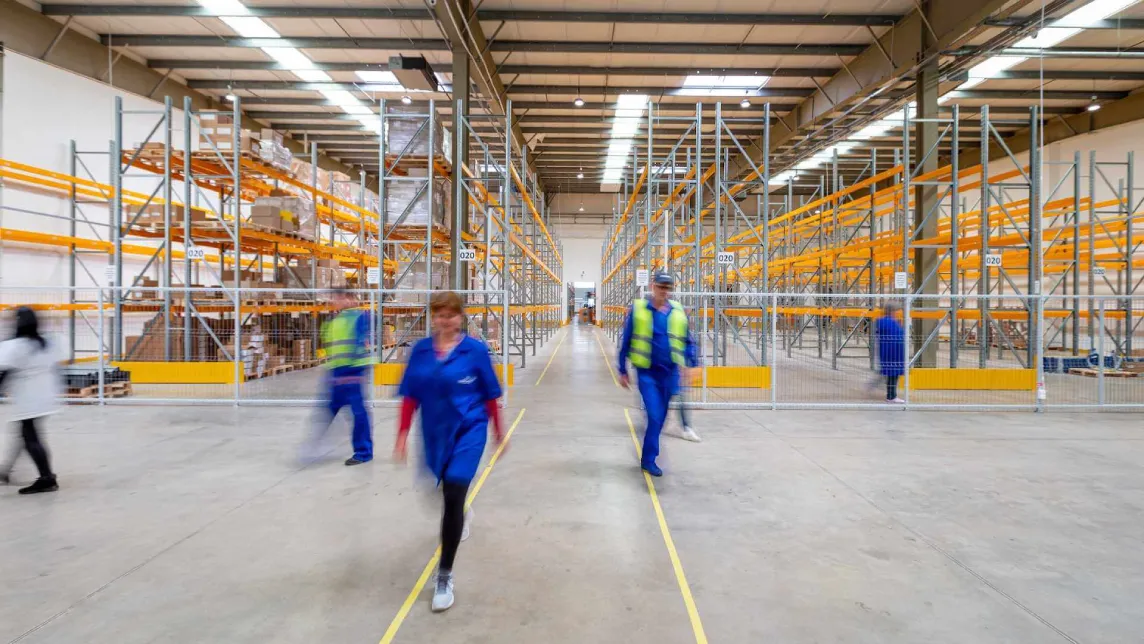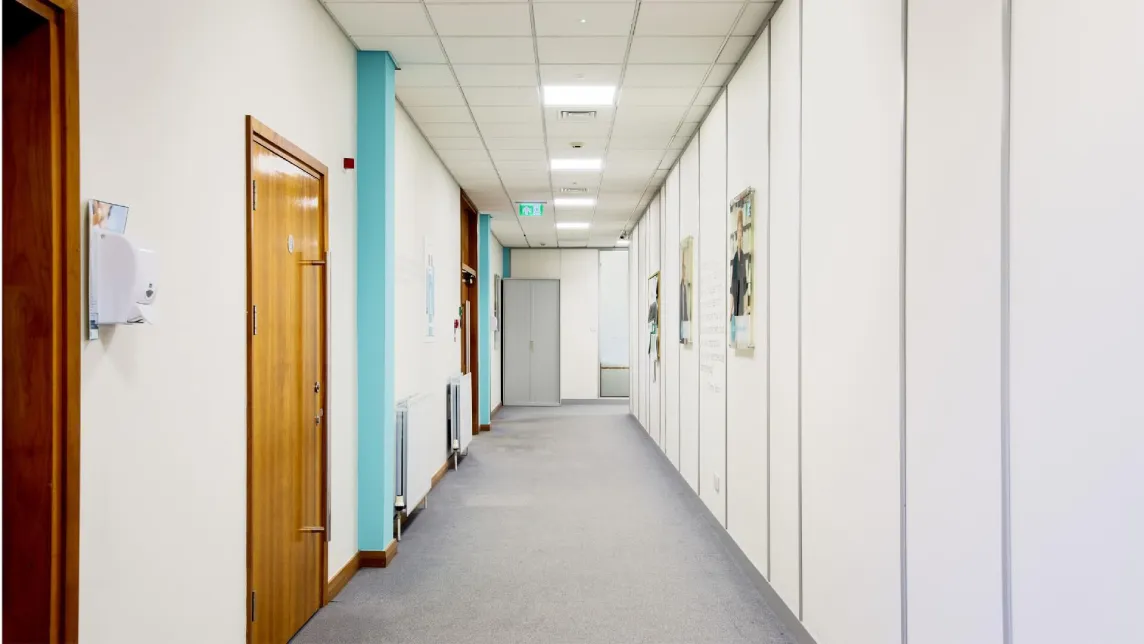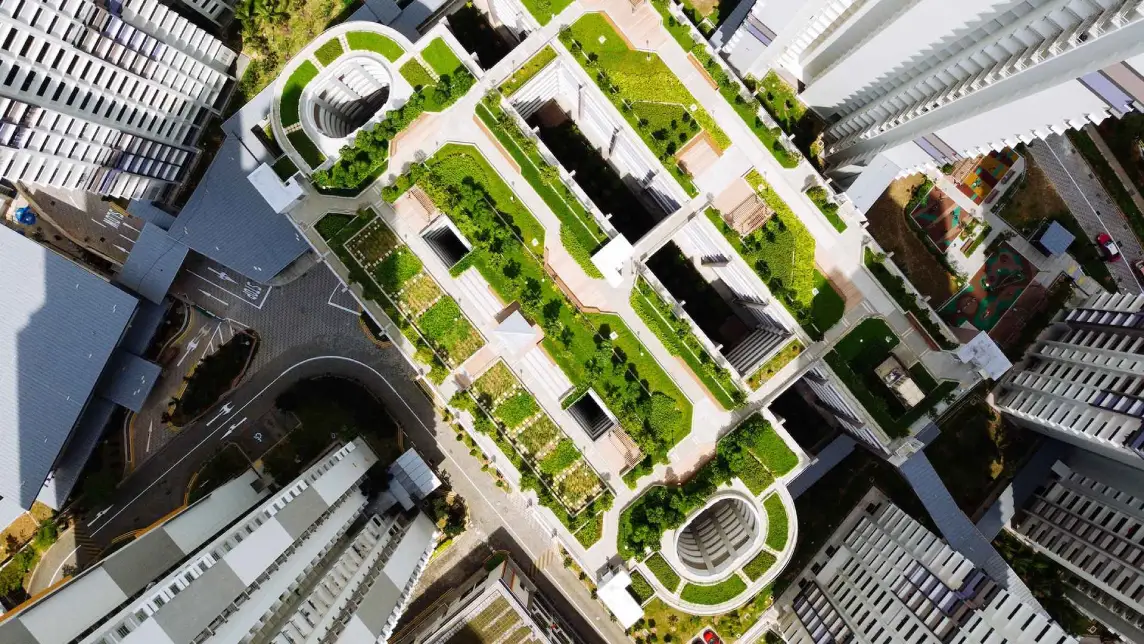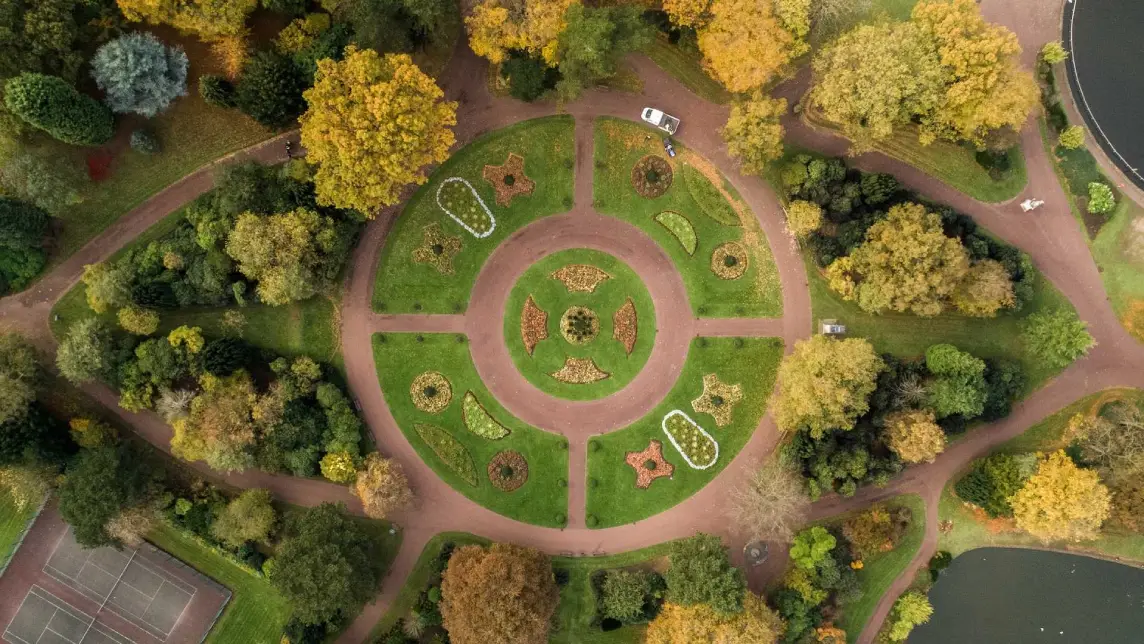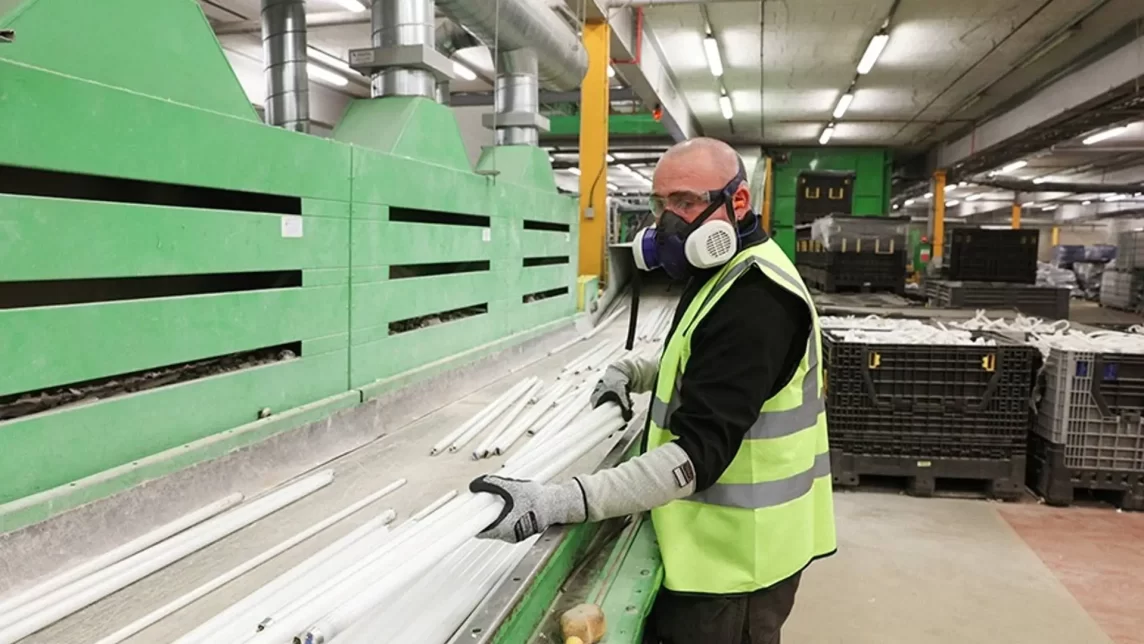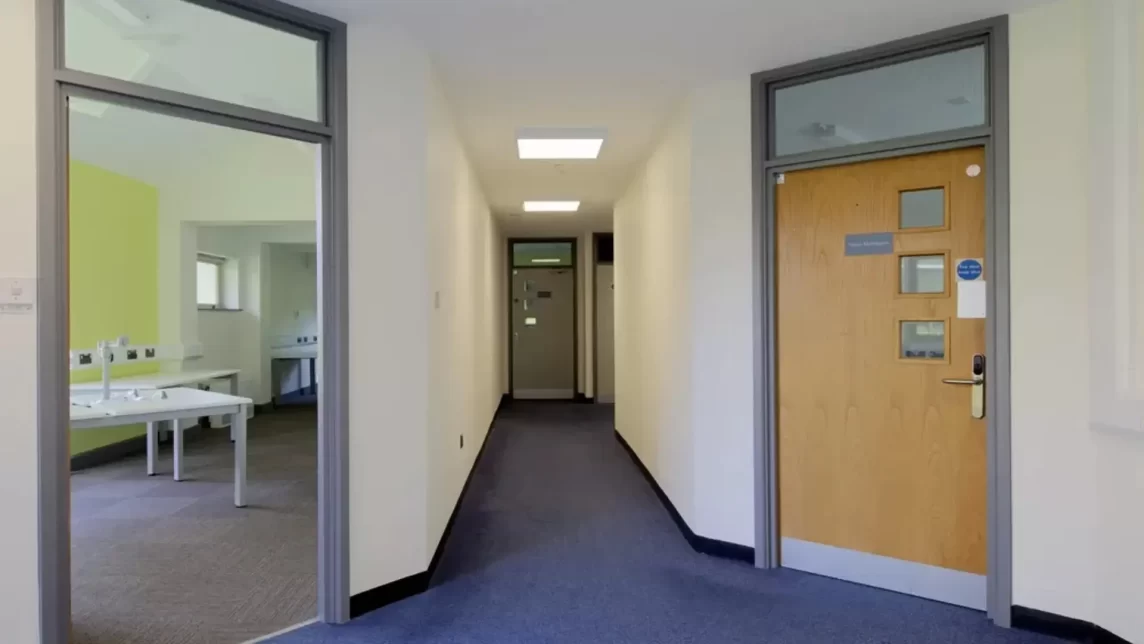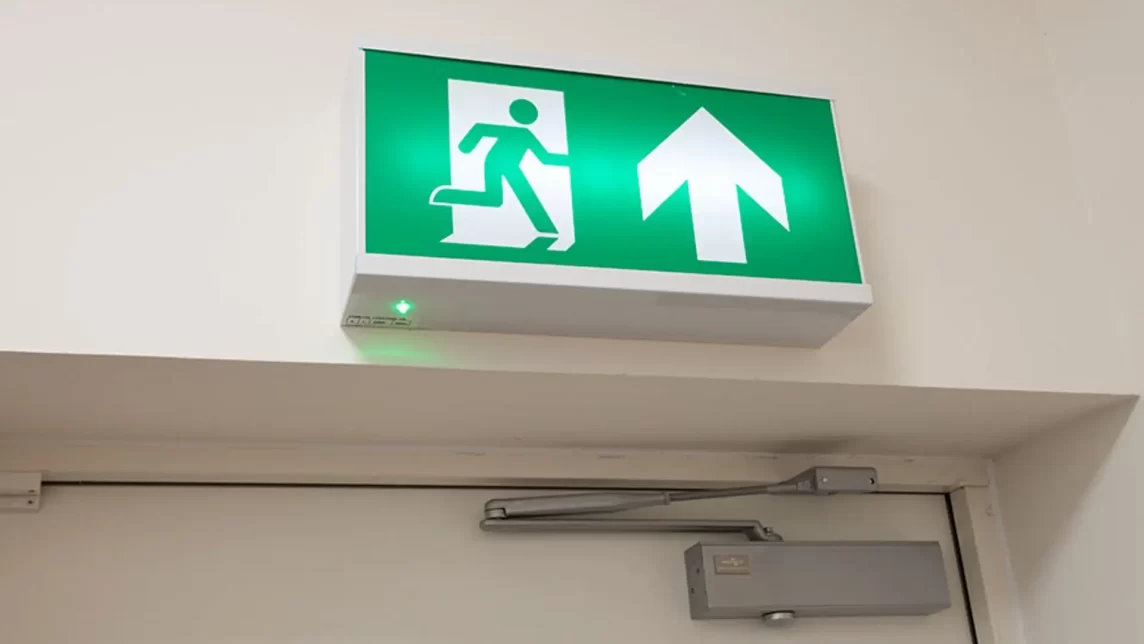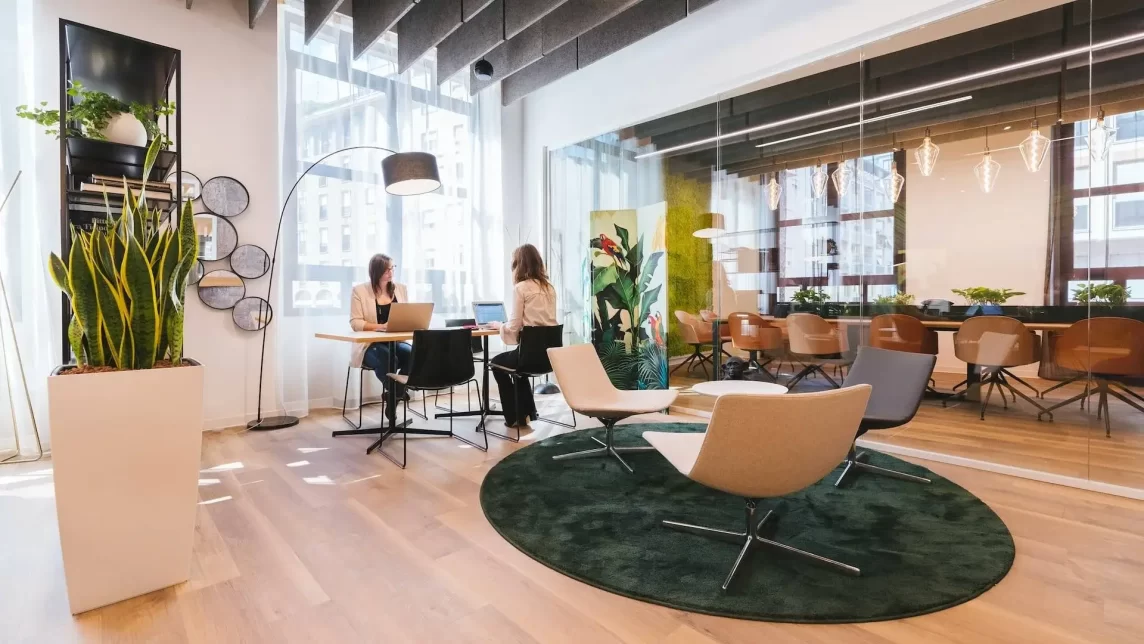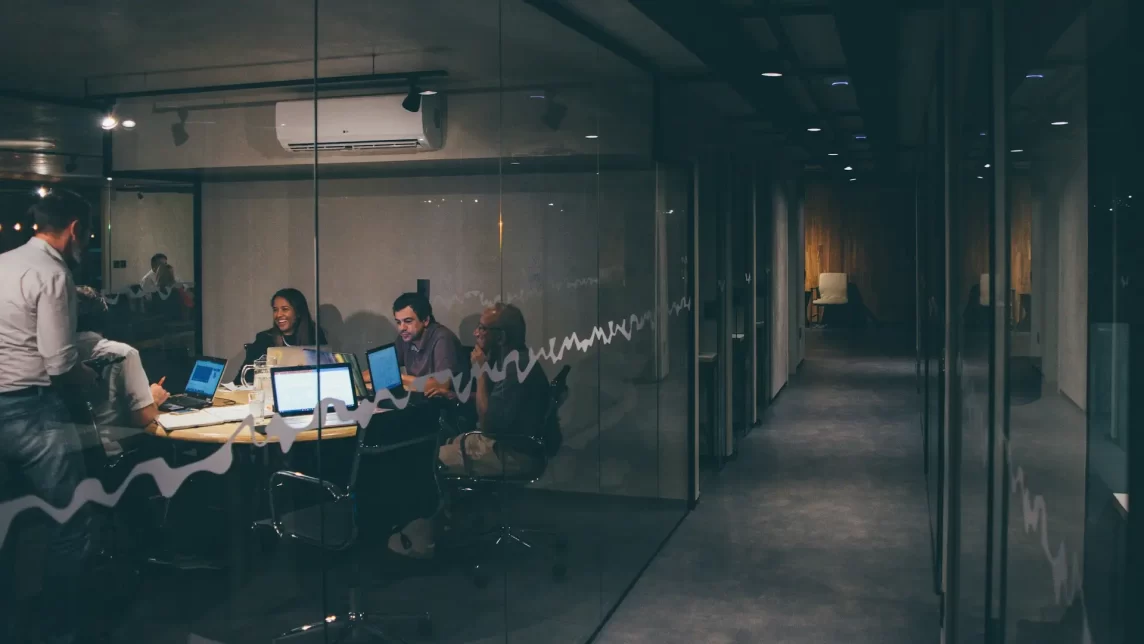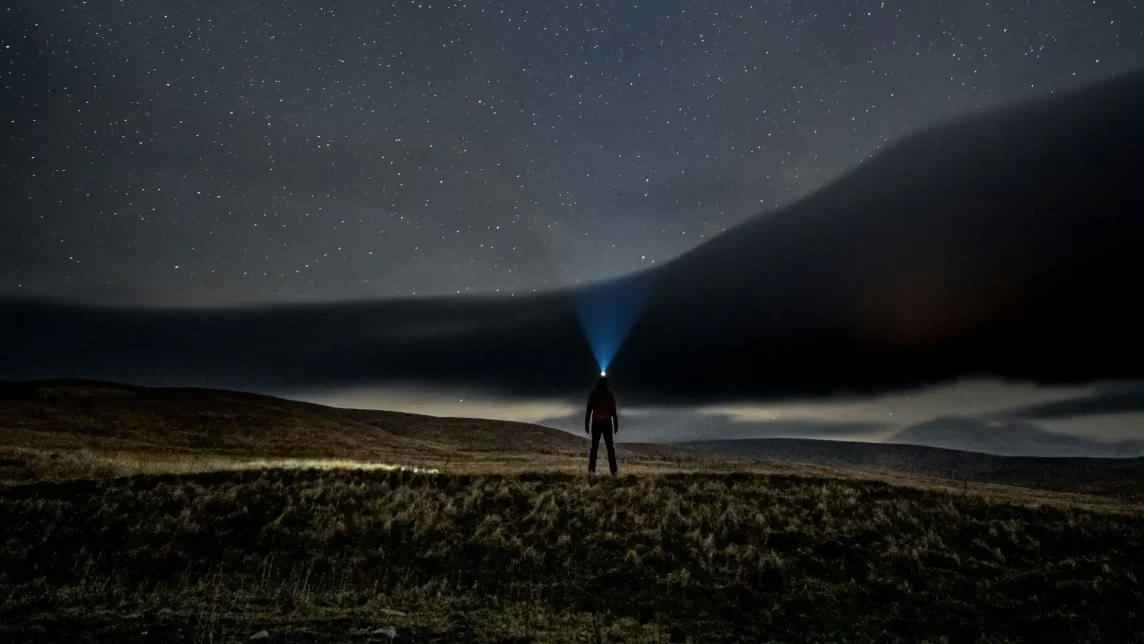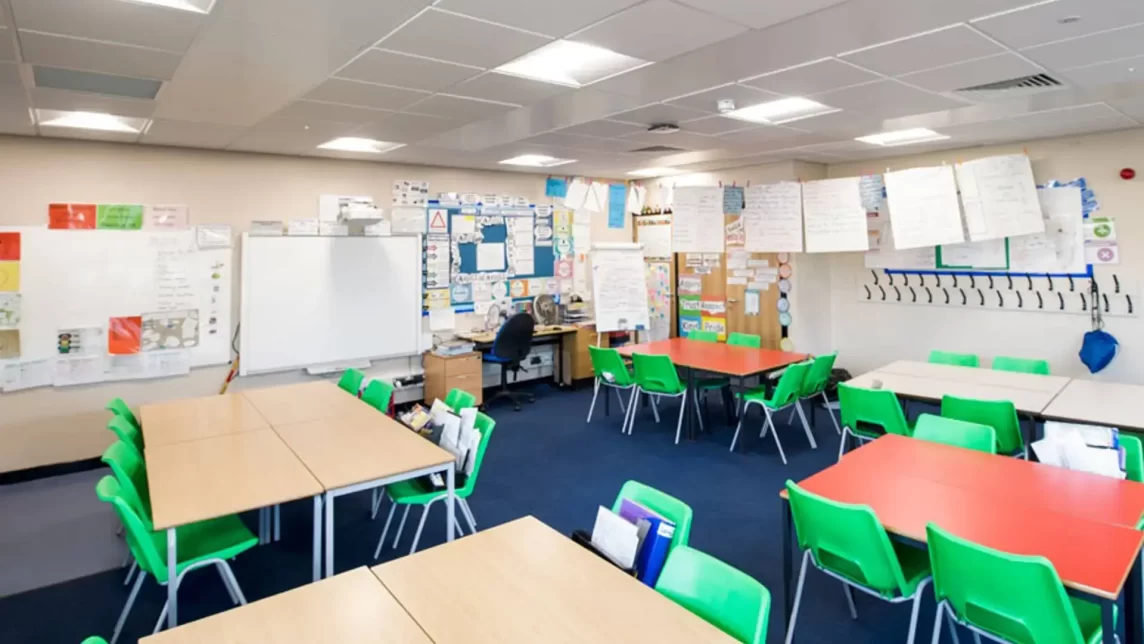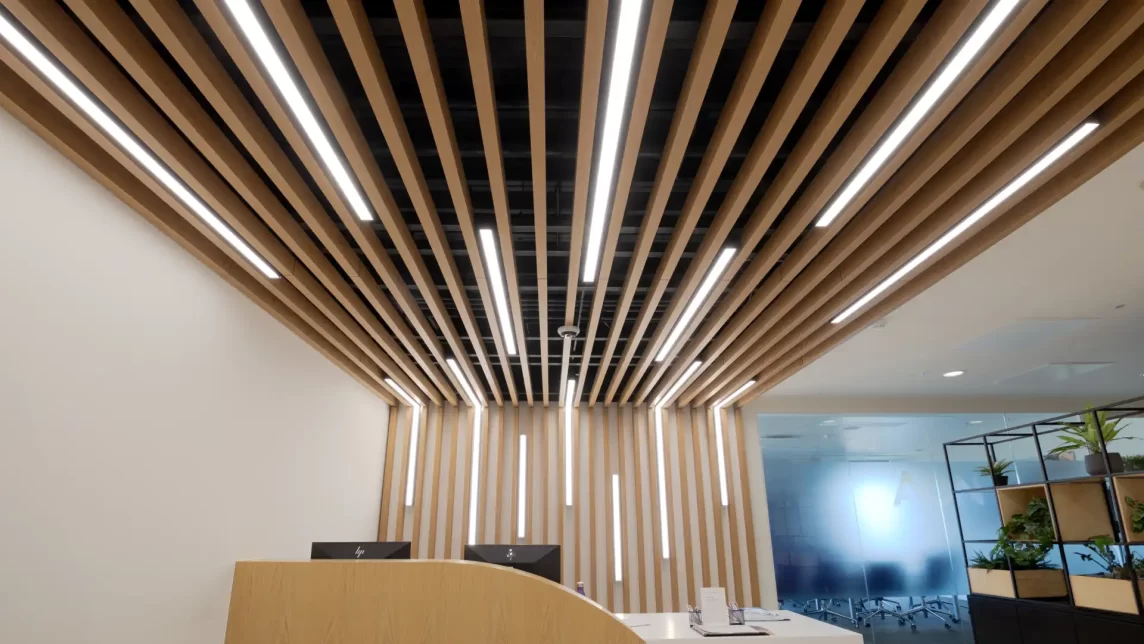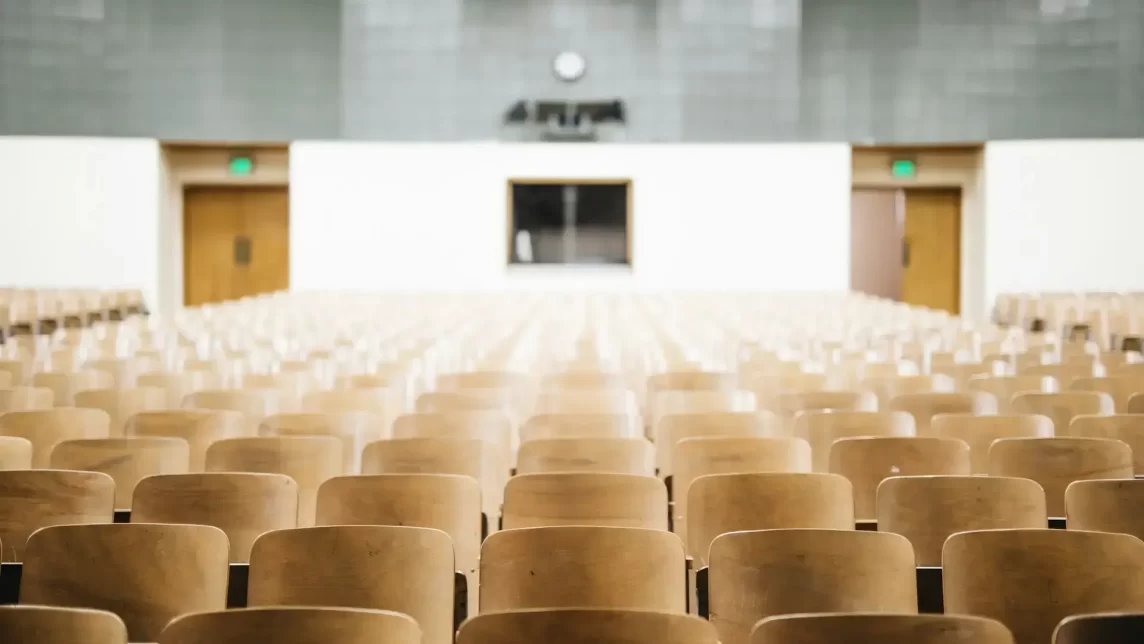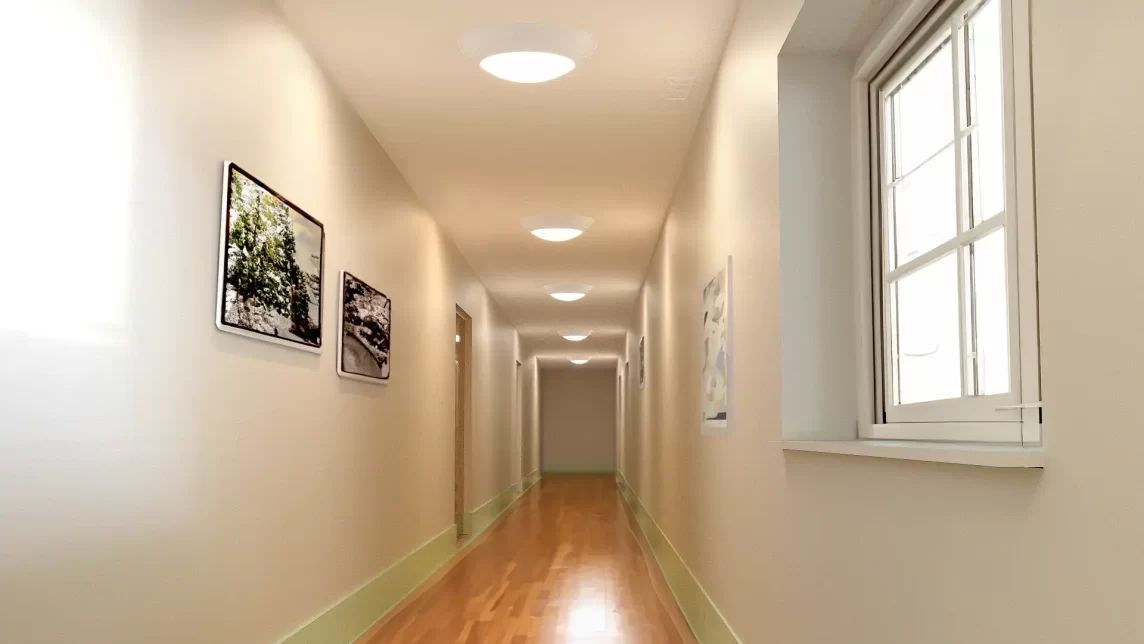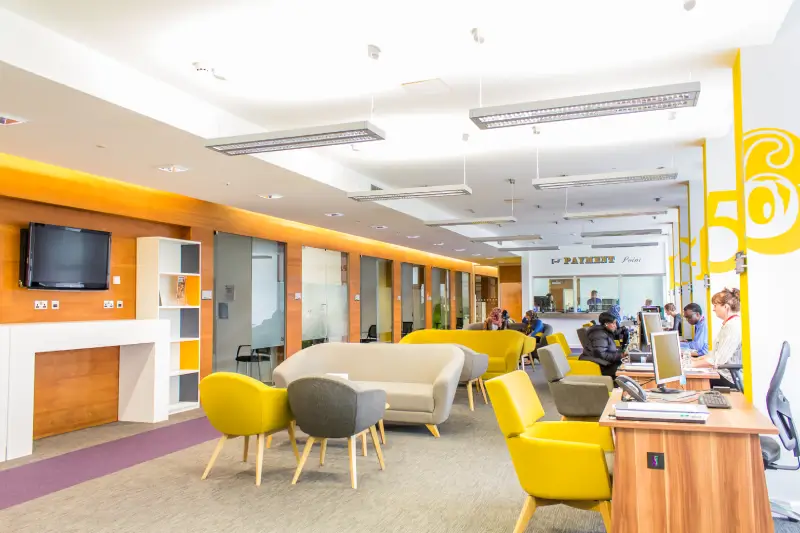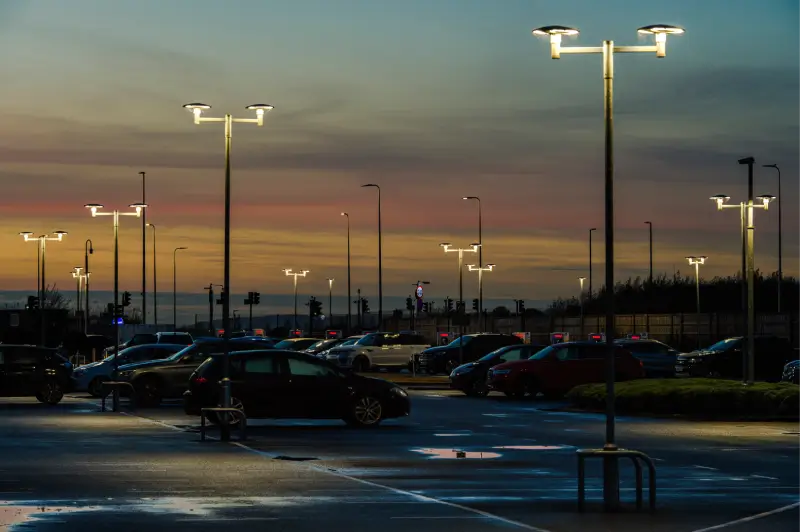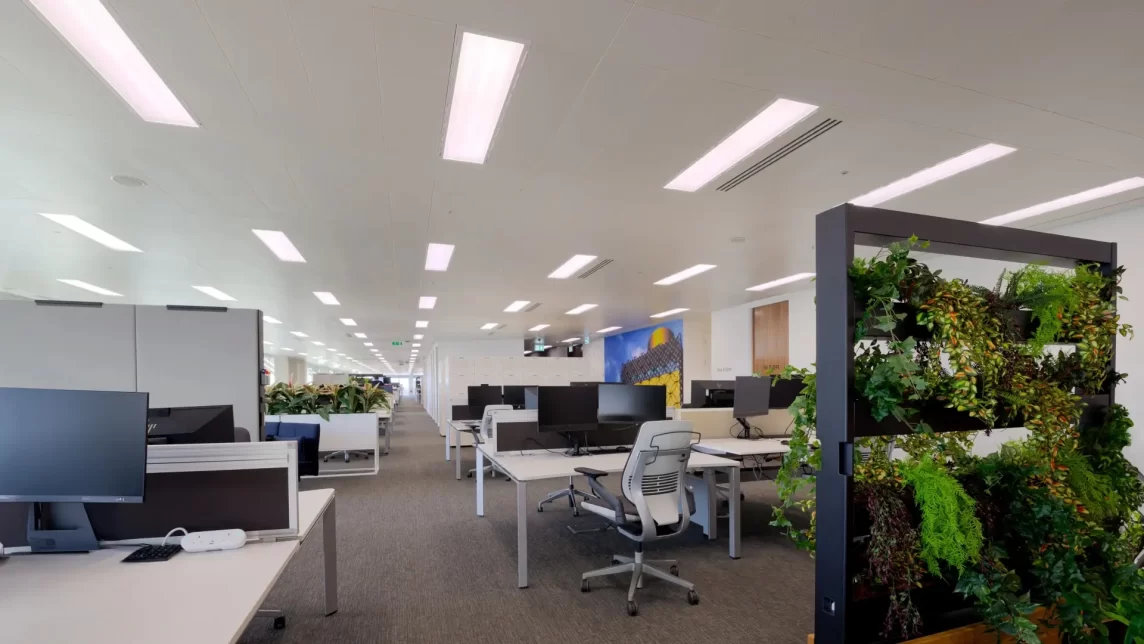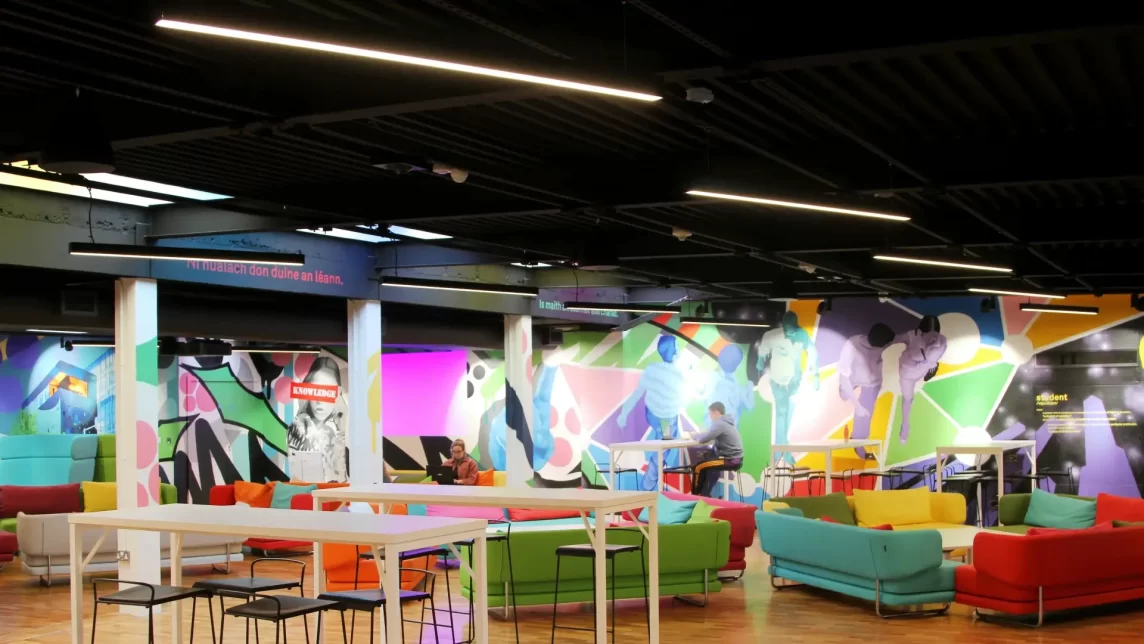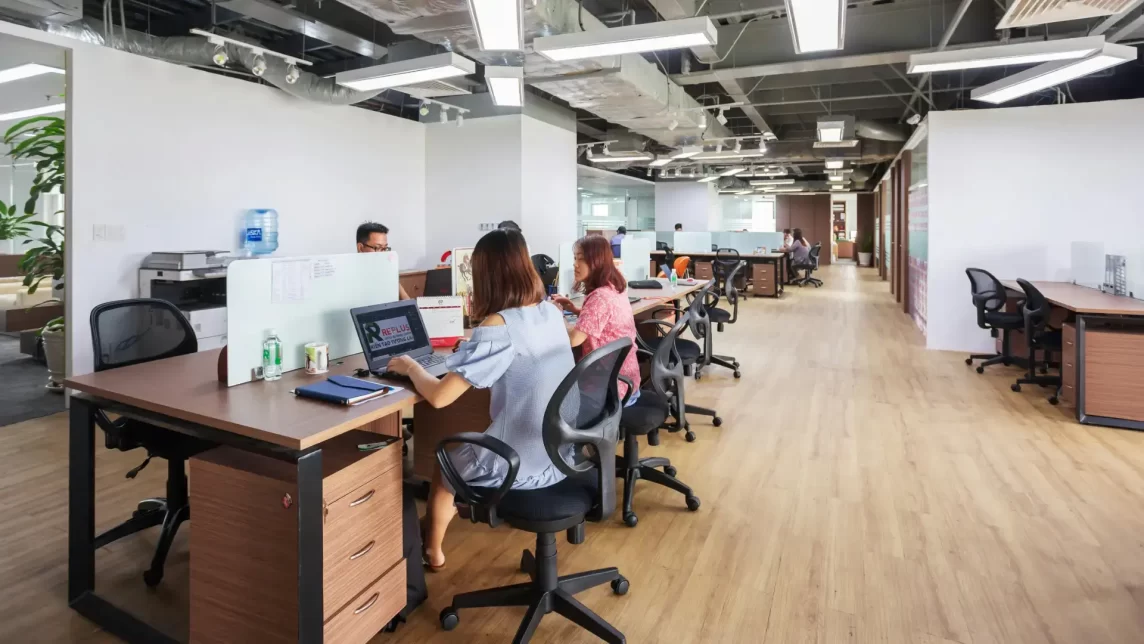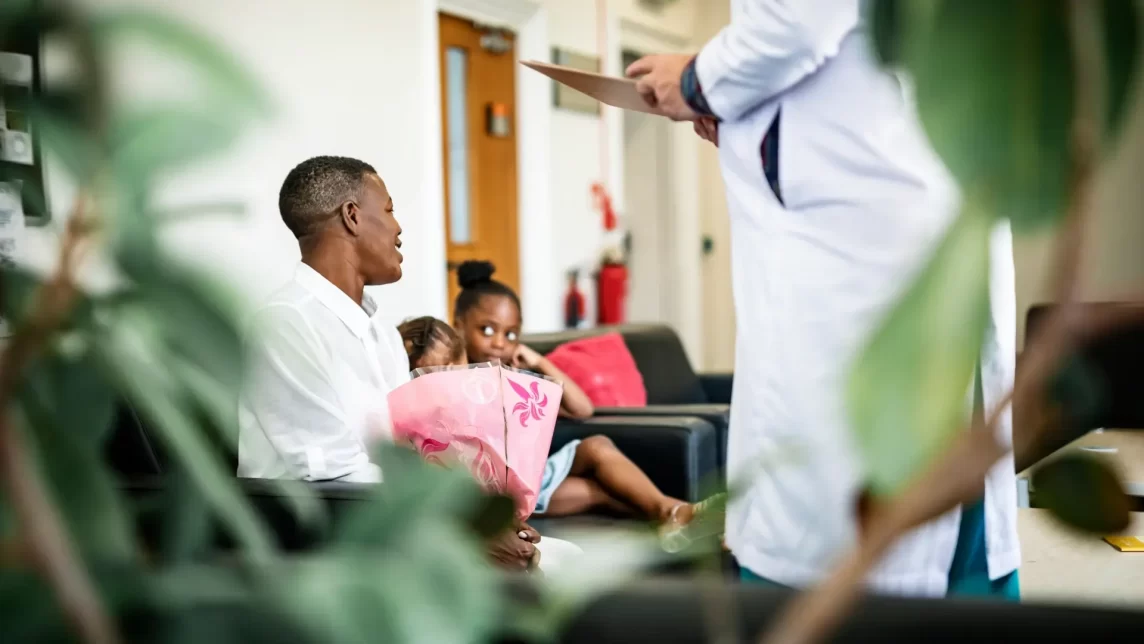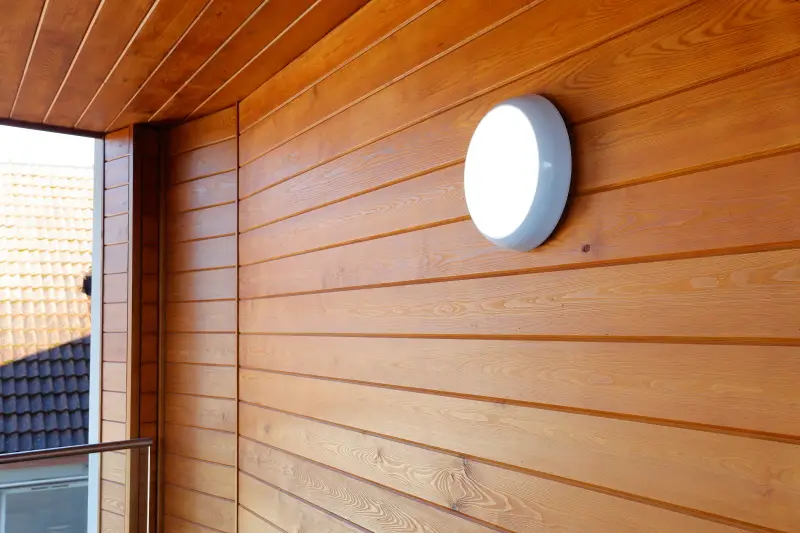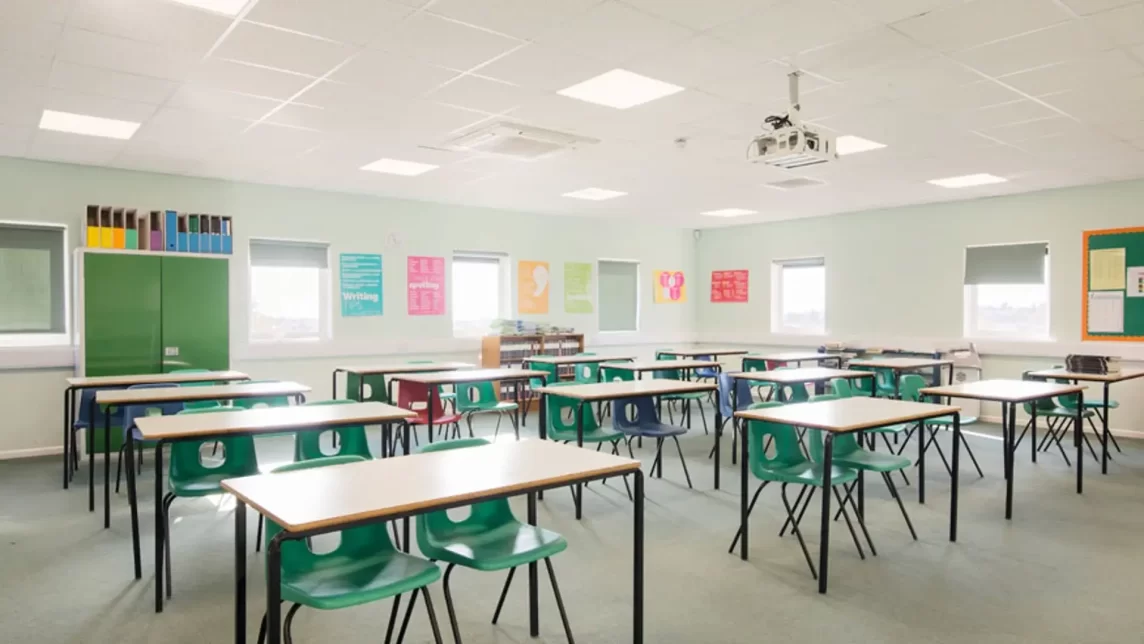
Lighting for education is about far more than enabling students to see. It can help create therapeutic and inclusive classrooms that support the learning and wellbeing of students, including those with neurodiverse needs.
Primary and secondary school students in the UK spend around 190 days per year at school and around 5-6 hours a day in classrooms. Their environment can have a decisive impact on their academic performance.
According to a study by the University of Salford, among all design parameters in schools, – such as air temperature, acoustics, and CO2 concentration – daylight has the highest impact on overall student progress.
In this article, T-Word explores the importance of designing daylight and artificial lighting together in school environments.
We also draw on the expertise of Mark Ellerby, director of award-winning design consultancy Mark Ellerby Architects, which specialises in the education sector, to consider how the needs of students and school staff can be supported by lighting design.
Light and Its Connection to Health and Wellbeing
Exposure to natural light, or artificial light that mimics daylight, is essential for regulating our internal clocks and maintaining a healthy sleep-wake cycle, as emphasised by the International WELL Building Institute.
Daylight, which has a prevalence of blue light waves, has been shown to improve mood, increase alertness and boost cognitive function. In a classroom context, these benefits translate to better attention, reduced stress, and enhanced academic performance.
The Therapeutic Benefits of Proper Lighting
Reduction of Stress and Anxiety: Proper lighting can significantly reduce stress and anxiety levels among students. Bright, natural light can enhance mood and energy levels, making students feel more comfortable and engaged. Conversely, during moments that require calm and focus, softer lighting can help create a peaceful environment.
Improved Attention and Behaviour: Poor lighting can lead to eye strain, fatigue, and diminished concentration. By ensuring that classrooms are well-lit with the right balance of natural and artificial light, students are more likely to remain attentive and behave positively, leading to better academic outcomes.
Support for Neurodiversity: For students with neurodiverse needs, such as those with sensory processing disorders, the lighting environment can be critical. Some lights may appear too bright, flicker or produce a stroboscopic effect, this can be overwhelming and disruptive. A stable, adjustable lighting environment can significantly improve their ability to focus and participate in classroom activities.
Artificial Daylighting: LED-Based Therapeutic Lighting Solutions
Most classrooms need to rely, for at least some of the time, on quality artificial lighting that complements and enhances any available daylight. The type, colour, and intensity of artificial light can significantly impact the classroom environment as we explored above. Here are some practical solutions to consider for improving your school’s lighting system:
Eight Ways to Implement Therapeutic Lighting in School Classrooms:
- Conduct a Lighting Audit: Assess the current lighting situation in classrooms to identify areas for improvement. Consider factors such as natural light availability, types of existing fixtures, and overall light distribution. Include aspects such as the position of existing windows and interior design details that affect lighting, for example, glossy white flooring will reflect lighting while dark wood flooring will make a room appear darker.
- Update to LED Lighting Systems: LED lights are energy efficient, long-lasting, and can produce a range of light intensities and colours. Unlike traditional fluorescent lights, LEDs are not prone to flicker or hum, reducing potential distractions and discomfort for students.
- Install Adjustable Lighting Systems: Equip classrooms with lighting systems that offer flexibility in terms of brightness and colour temperature. This can include dimmable LEDs and smart lighting controls. But, as Mark Ellerby cautions, consideration needs to be given to the type of controls used: Control systems that prevent sudden changes, in lighting intensity can be more supportive of neurodiverse pupils, he says. “Lighting that increases in intensity gradually is preferable.”
- Consider Colour Temperature: The colour temperature of lighting, measured in Kelvins (K), influences the ambiance of a room. For example; Warm White light (2700K-3000K) creates a cosy, calming atmosphere, while blue /cool light (5000K-6500K) mimics daylight and can enhance alertness and concentration. Classrooms should have adjustable lighting to cater to different activities and times of day, promoting optimal learning conditions.
- Create Calm Areas: Some pupils may prefer access to very low or no light areas, for example, sensory rooms or therapy rooms/quiet rooms. High traffic areas in schools can also be calmed through lighting design. “Overly bright, and noisy, corridors can create a stressful environment for all building occupants,” says Mark Ellerby. “Consider muting corridor lighting, and managing the acoustics in these areas, to lower the sensory impact on students and staff moving through connective spaces.” He adds: “The impact of sensory overload, especially in travelling (walking) to classrooms, is an important area that needs more attention in school design.”
- Consider Rooms’ Wider Interior Design and Colours: Bright white walls with a bright ‘white’ light can cause glare, which can be problematic for some people. “Give particular consideration to the positions of teaching walls and whiteboard/screen locations,” says Mark Ellerby. “Avoid light from windows or lighting causing glare, which can affect the ability of students to read the board or focus on the teacher.”
- Staff Awareness: Provide training for teachers and staff on the importance of lighting and how to use adjustable lighting systems effectively. Encourage them to experiment with different lighting settings to find what works best for their students.
- Incorporate Student Feedback: Engage students in discussions about their lighting preferences and comfort levels. Their feedback can provide valuable insights into creating the most effective lighting environment.
In Conclusion
The role of lighting as a powerful tool in creating therapeutic environments is increasingly being recognised: Light is one of the WELL Building Standard‘s seven key concepts that comprehensively address how the design and operations of buildings impact and influence human behaviours related to health and wellbeing.
By using LED based lighting systems to create therapeutic classroom environments in schools, both students’ and teachers’ wellbeing and health can be better supported.
Mark Ellerby emphasises the importance of considering lighting design alongside other key design areas:
“All aspects of classroom design need to work together (acoustics, daylighting, fenestration design, furniture design, room uses, room layouts and equipment, interior colour design, reflectivity). There must be an integrated approach to achieve the best results for pupils and staff, but there is no doubt that lighting is a key component of successful classroom design.”
- Tamlite Lighting offers a full range of products for the education sector designed with occupant wellbeing, sustainability and performance in mind. These products can be retrofitted to existing lighting systems and includes luminaries specifically tailored to meet the lighting needs of sports halls, corridors, lecture theatres, classrooms and reception areas.
- For further information about our products for the education sector, please visit our website.




